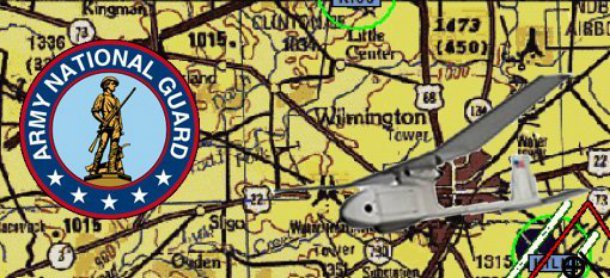 Data collected by the Army National Guard’s unmanned aircraft in American skies could be passed along to other government agencies, as long as it is “unintentionally and incidentally collected,” according to internal documents acquired last week.
Data collected by the Army National Guard’s unmanned aircraft in American skies could be passed along to other government agencies, as long as it is “unintentionally and incidentally collected,” according to internal documents acquired last week.
The “Proper Use Memorandum,” acquired by MuckRock, an organization dedicated to making government documents public, and shared with U.S. News, says that while unmanned aircraft are not to be used to specifically “target” any “U.S. persons,” anything captured incidentally can be disseminated to other agencies.
“Any personally identifying information unintentionally and incidentally collected about specific U.S. persons will be purged and destroyed unless it may be lawfully retained and disseminated to other government agencies that have a need for it,” the document states.
National Guard organizations in at least 13 states and Guam have requested permission from the Federal Aviation Administration to test or use UAS in the United States. The states are California, Illinois, Iowa, Louisiana, Michigan, Minnesota, New Mexico, Ohio, Oklahoma, Oregon, Tennessee, Texas, and Virginia, according to the FAA.
This “boilerplate memo,” which is to be used as a template for each individual state’s purposes, was obtained from the Ohio National Guard, which has requested permission to fly UAV training missions out of three sites in Ohio (Springfield-Beckley Municipal Airport, Camp Ravenna Joint Military Training Center, and Wilmington Air Park).
Officials with the Ohio Army National Guard say that although they have requested permission to fly UAS in the state, they currently don’t have any in use.
“If the question is ‘Are we flying UAS right now in Ohio,’ the answer is ‘No we are not,'” says Ohio Army National Guard representative James Sims. “We’re working with the FAA to ensure we do it in the proper way.”
Sims says the initial request was made in order to get permission to train recruits how to fly Predator and Raven UAS overseas, and that the intent of the programme would not be to spy on American citizens. Sims says that if a UAS were to capture video of a crime in progress, they could theoretically pass that footage to law enforcement officials.
“Part of what folks don’t understand is we’ve got a lot of manned aircraft flying around in Ohio that have the same imagery capabilities these drones have. If an F-16 were flying around and saw a crime in progress, that info could be used in court. It’s the same kind of thing with an unmanned vehicle,” he says. “They’re not out looking for something, but if they see something that happens, applicable laws take over at that point. But these are not out being used to spy on U.S. citizens.”
